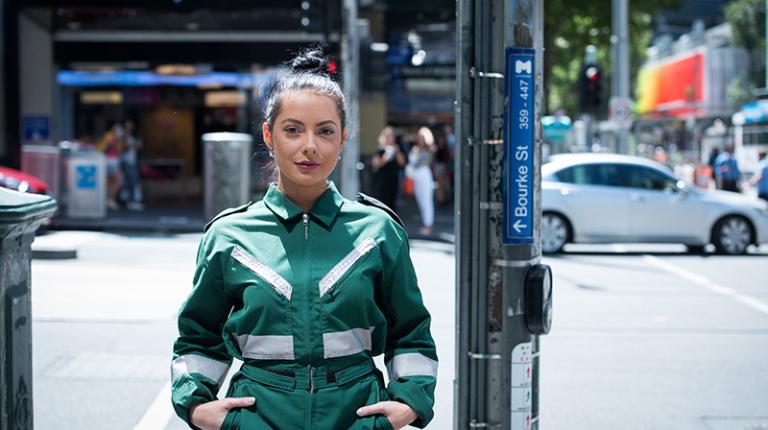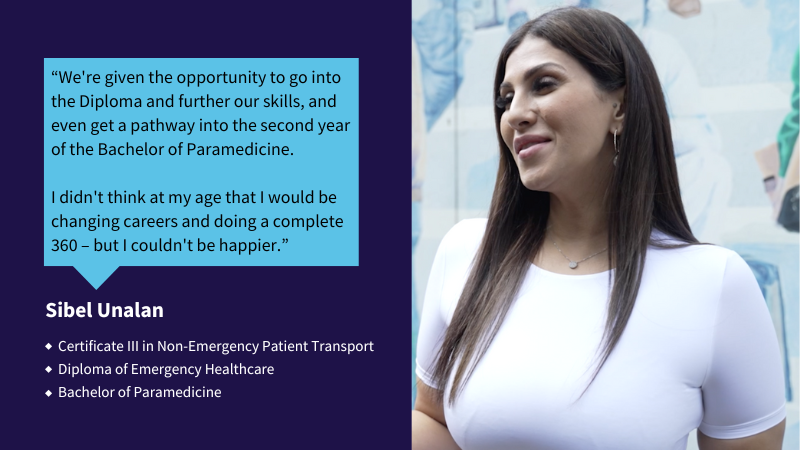Average paramedic salaries across Australian states
Paramedics provide urgent care to patients during medical emergencies – and it’s also a sector experiencing record growth and great pay. Jobs and Skills Australia’s projected growth for the industry is over 20% in the next ten years, and lately in both NSW and Victoria, Ambulance Unions have been striking deals for pay rises across the industry. High demand is driving record growth in jobs and wages, and strong action from within the industry voices is propelling this further.
So, if you’re thinking about a career as a paramedic or ambulance officer, you’re probably wondering what’s in store salary-wise – and that’s where we come in. We’ve compiled a guide of what to expect across every state and territory, as well as some quick and vital facts for the industry and its future.
Paramedicine: stats at a glance | |
|---|---|
| Average national salary | $110,000 approx. |
| In shortage? | Ambulance officers are in shortage at both national and state level. |
| Employment growth (paramedicine) – past 1 year | +1,900 jobs (+8% increase) |
| Employment growth (allied health sector) – past 10 years | +72,244 jobs (+66.5% increase) |
| Sources: Health Workforce report 2024 (Australian Institute of Health & Welfare), Labour Account Australia (ABS), Jobs and Skills Australia. | |

What influences your paramedic salary?
The average salary for a paramedic in Australia is around $110,000 – but it varies depending on the state, city and region you work in.
Most of all, your salary depends on your experience and whether you have additional skill sets or specialise in a particular role. For example, intensive care paramedics earn an additional $3.71 to $5.01 on top of their hourly wage.*
Which states pay the most, and which the least? Read on to get an idea of what to expect from paramedic salaries across Australia.
*Source: Fair Work Ombudsman
How much are paramedics paid in Tasmania?
Between $83,666 and $134,291 per year.
In Tasmania, your pay as a paramedic depends largely on your experience level, ranging from $83,666 per year as a Paramedic Year 1 B through to $134,291 per year as a Paramedic Year 7 H.
There are different salaries based on your experience as well, and as per most industries, you’ll be paid more as you progress through your career. Expect to earn more when working in a specific role – such as a Flight Paramedic, Ambulance Manager or Intensive Care Paramedic.
How much are paramedics paid in Queensland?
Between $66,110 and $163,451 per year.
Pay for paramedics in Queensland appears to be lower on average compared to other states and territories. Demand for paramedics in certain regions plays a big role in how much you can get paid. For example, the average salary for a paramedic in Gladstone and Central Queensland was reported to be $163,451 while in Mackay and Coalfields, it was around $125,000. Regardless of where you work, your salary is largely influenced by your experience level and specialised skills.
Source: Queensland Industrial Relations Commission and Seek.
How much are paramedics paid in South Australia?
Between $81,067 and $155,000 per year.
Paramedics in South Australia will find that location has a big impact: - paramedics in Adelaide earn around $155,000 on average, higher than other regions like Port Augusta, where the average pay is between $81,067 – $97,613 per year with a 37.57% rolled-in rate (additional pay for working during peak demand periods like weekends, night shift and holidays.)
Source: iworkforsa.gov.au and Seek.
How much are paramedics paid in the Northern Territory?
Between $115,000 and $125,000 per year.
For healthcare workers opting to work in remote areas, they’ll often see this reflected in an increased salary. This seems to be the case with paramedics in the NT, who may attract higher pay at the lower end of the scale. On the other hand, wages at the top level don’t appear to go as high as other states and territories. And as always, salaries also vary based on experience level and speciality.
Source: Seek.
How much are paramedics paid in Victoria?
Between $67,184 and $145,236 per year.
As a state that’s largely metropolitan and Melbourne-centric, paramedic salaries may be higher on average. However, different roles and experience levels can mean vastly different pay amounts – and the following data is based on the Ambulance Victoria Enterprise Agreement from 2020, Employee Agreement, with the newly-struck deal set to roll out into the Victorian industry shortly.
In Vic, a graduate paramedic will earn around $67,000 to $69,000, with pay increases each year as they build more experience on the job. And, working in specialised areas such as rural or aeromedical may mean more cash.
Stay tuned for more updates on concreted rates of pay for paramedics in Victoria. In the meantime, on a local note – did you know our VU partnership with Ambulance Victoria allows students to gain practical experience into emergency care, at Australia’s first Centre of Excellence in Paramedicine? Read more for what this means for paramedicine students at our Sunshine Campus – and what it could mean for you if you’re considering studying with us!
Source: Ambulance Victoria.
How much are paramedics paid in New South Wales?
Between $71,000 and $112,000 per year.
Paramedic wages are reportedly lower on average compared to other states and territories – but with recent industrial action, this could be set to change. Following union movements by the Ambulance Division of the Health Services Union (ADHSU) in 2023, paramedicine wages are set to increase in New South Wales over the next four years by between 11% and 29%. Keep an eye out here for more info, but currently under their existing Award, graduate paramedics can expect to start on around $71,000 and can reach around $102,000 (as a critical care paramedic) – where clinical care team leader paramedics can see up to $112,000.
Source: NSW Health.
Australian paramedic salaries by state & territory
| State/territory | Paramedic salary range |
|---|---|
| TAS | $83,666 – $134,291 |
| QLD | $66,110 – $163,451 |
| SA | $81,067 – $155,000 |
| NT | $115,000 – $125,000 |
| VIC | $67,184 – $145,236 |
| NSW | $71,000 – $112,000 |
With growing demand in healthcare across Australia and the opportunity to earn a six-figure salary, paramedicine is a rewarding and high-paying career to consider.
Keep in mind, some figures in this article are sourced from Seek, which relies on data from employer job postings and may not be indicative of wider trends.
Remember that paramedic salaries vary a lot and often involve additional rates on top of the base salary, making it harder to get the clearest picture on average earnings across the sector.
How to become a paramedic
If you’re interested in becoming a paramedic, consider studying VU’s highly-regarded Bachelor of Paramedicine. We offer multiple ways to get your paramedic qualification at VU. You can go directly into the Bachelor’s (three years full-time) or start with a TAFE course and transition into your degree.
In the TAFE pathway, you’ll complete:
- Certificate III in Non-Emergency Patient Transport HLT31120 (six months full-time) – where you’ll learn skills needed for entry-level jobs like a first aid provider, ambulance call taker or ambulance assistant.
- Diploma of Emergency Health Care HLT51020 (seven months full-time) – where you’ll learn how to assess patients and provide emergency care as a Patient Transport Officer (PTO) or Ambulance Transport Attendant (ATA).
- Bachelor of Paramedicine (two years full-time) – where you’ll prepare for a career as a paramedic and learn to provide urgent out-of-hospital care for patients.
Our industry partnerships with Ambulance Victoria and the Royal Flying Doctor Service means you get practical on-the-job experience, so you graduate ready for your career.
Start your career as a paramedic at VU
Sibel's pathway into paramedicine
Sibel Unalan opted for a complete career change after hairdressing for years, diving back into study at VU. Beginning with the Certificate III in Non-Emergency Patient Transport, Sibel's journey took her all the way through to completing her Bachelor of Paramedicine thanks to our pathways.
Now, fully qualified and working as a paramedic, she's never looked back.
